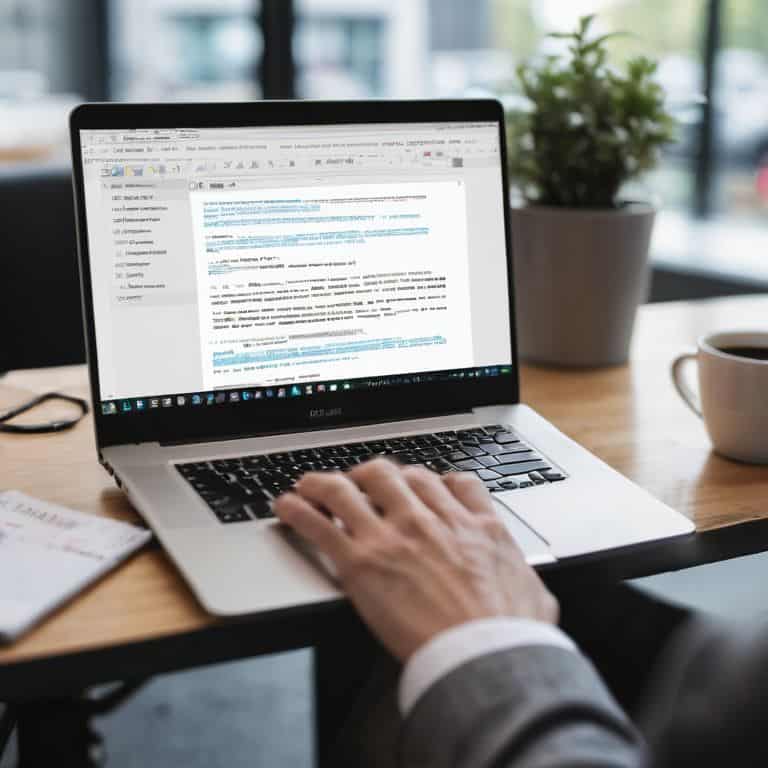I still remember the first time I had to troubleshoot a slow website for a frustrated blogger. The culprit? Poorly implemented on-page seo techniques. It’s astonishing how often I’ve seen writers sacrifice their online presence due to misunderstandings about search engine optimization. The truth is, mastering on-page SEO isn’t about manipulating search engines; it’s about creating a seamless user experience that just happens to align with Google’s guidelines.
In this guide, I’ll cut through the clutter and share practical, no-nonsense advice on how to boost your website’s visibility using effective on-page SEO techniques. You won’t find any technical jargon or vague promises here. Instead, I’ll walk you through simple, step-by-step strategies to optimize your website’s performance, from crafting compelling meta descriptions to optimizing images for faster load times. By the end of this article, you’ll have a clear understanding of how to apply on-page SEO techniques that drive real results, without needing to hire a developer or waste hours on trial and error.
Table of Contents
Guide Overview: What You'll Need

Total Time: 1 hour 30 minutes
Estimated Cost: free – $100
Difficulty Level: Intermediate
Tools Required
- Google Search Console (for website analysis)
- Keyword Research Tool (e.g., Ahrefs, SEMrush)
- Text Editor (for editing website content)
Supplies & Materials
- High-Quality Website Content (well-structured and informative)
- Relevant Keywords (for optimization purposes)
- Meta Tags (for title and description tags)
Step-by-Step Instructions
- 1. First, let’s talk about optimizing your title tags, which is a crucial step in on-page SEO. Your title tag is what shows up in search engine results as the title of your page, so make sure it accurately reflects the content and includes your target keywords. Keep it concise, under 60 characters, and make sure it’s unique for each page on your site.
- 2. Next, you need to focus on writing a compelling meta description. This is the short paragraph that shows up in search engine results under your title tag, and it should entice users to click through to your site. Keep it under 160 characters, and make sure it includes your target keywords. Don’t stuff it with keywords, though – it should still read naturally and make sense.
- 3. Now, let’s move on to header tags, which help structure your content and make it easier to read. You should have one H1 tag per page, which is usually your title, and then use H2, H3, and so on to break up your content into sections. This not only helps users scan your page but also helps search engines understand the hierarchy of your content.
- 4. When it comes to image optimization, there are a few key things to keep in mind. First, make sure your images are compressed to reduce file size, which can help your page load faster. You should also use descriptive alt tags that include your target keywords, and make sure your file names are descriptive and include keywords as well.
- 5. Next up is internal linking, which helps users and search engines navigate your site. You should link to other relevant pages on your site, using descriptive anchor text that includes your target keywords. This not only helps users find related content but also helps search engines understand the structure of your site.
- 6. Now, let’s talk about content quality, which is a critical factor in on-page SEO. Your content should be well-researched, engaging, and provide value to users. It should also be long-form content, with a minimum of 500 words per page. This helps search engines understand that your content is comprehensive and authoritative.
- 7. Finally, you need to focus on page speed, which is a critical factor in user experience and search engine rankings. You should aim for a page load time of under 3 seconds, which can be achieved by compressing images, minifying code, and using a content delivery network (CDN). You can use tools like Google PageSpeed Insights to test your page speed and get recommendations for improvement.
- 8. In addition to these technical steps, you should also focus on user experience, which is a critical factor in on-page SEO. Your site should be easy to navigate, with a clear and consistent design. You should also have a clear call-to-action (CTA) on each page, which tells users what action to take next. This could be to sign up for a newsletter, download an e-book, or contact you for more information.
On Page Seo Techniques

When it comes to creating an SEO friendly website design, it’s essential to consider the user experience. A well-structured site with clear navigation and concise content will not only improve your search engine rankings but also keep your visitors engaged. One often overlooked aspect is header tag optimization, which helps search engines understand the hierarchy of your content. By using header tags (H1, H2, H3, etc.) correctly, you can improve the readability and accessibility of your site.
To take your optimization to the next level, focus on image optimization techniques. This includes compressing images to reduce file size, using descriptive alt tags, and naming your images with relevant keywords. By doing so, you’ll not only improve your page load times but also increase the visibility of your images in search engine results. Remember, seo best practices for bloggers are all about finding a balance between technical optimization and high-quality content.
As you continue to optimize your site, consider conducting a technical seo audit to identify areas for improvement. This can be a daunting task, but with the right tools and checklist, you can ensure your site is running smoothly and efficiently. Whether you’re running a blog or an seo for e-commerce websites, the principles remain the same: provide value to your users, and the search engines will follow. By following these tips and staying up-to-date with the latest seo best practices, you’ll be well on your way to creating a fast, secure, and reliable site that attracts and engages your target audience.
Cutting Edge Header Tag Optimization
When it comes to header tags, I see a lot of bloggers getting it wrong. They either overuse them or don’t use them at all. Here’s the deal: header tags (H1, H2, H3, etc.) are meant to structure your content, not just make it look pretty. Use your H1 tag for the title, and then use H2 and H3 tags to break up subheadings and key points. This isn’t just about making your content more scannable – it’s also a major SEO boost.
I like to think of header tags as a roadmap for search engines. By using them correctly, you’re telling Google exactly what your content is about, and how it’s organized. So, take the time to get your header tags in order. It’s a simple step, but it can make a big difference in how your site performs. Trust me, it’s worth the extra few minutes to get it right.
Image Optimization for Seo Friendly Website Design
When it comes to images, I see a lot of bloggers making the same mistake: uploading huge files that slow down their site. To avoid this, I recommend compressing your images using a tool like TinyPNG or ShortPixel. This will significantly reduce the file size without affecting the quality. Additionally, make sure to use descriptive alt tags and file names that include your target keywords. This will not only improve your site’s accessibility but also help search engines understand the content of your images.
By optimizing your images, you can improve your page load times and boost your website’s overall performance. I like to think of it as fine-tuning my custom mechanical keyboard – every small adjustment can make a big difference in the end result.
5 Essential On-Page SEO Techniques to Boost Your Website

- Use descriptive and keyword-rich titles that accurately reflect your content and entice users to click
- Write compelling and informative meta descriptions that summarize your page’s content and improve click-through rates
- Optimize your header tags to create a clear hierarchy of content and highlight key points to search engines and users
- Ensure all images are properly tagged with descriptive alt text and compressed to reduce file size and improve page load times
- Use internal linking to help search engines understand your site’s structure and guide users to relevant and related content
Key Takeaways for a Faster, SEO-Friendly Website
Optimize your website’s structure and content with simple, step-by-step on-page SEO techniques to improve search engine rankings and loading speed
Use header tags and image optimization strategies to create an SEO-friendly website design that boosts your online presence without requiring extensive technical knowledge
By implementing these straightforward on-page SEO strategies, you can take control of your website’s performance, discipline your online presence, and attract more visitors without breaking the bank on expensive developers or SEO consultants
The Simple Truth About On-Page SEO
On-page SEO isn’t about tricking Google, it’s about making your website a seamless, high-performance machine that delivers exactly what your visitors are searching for – and that’s a direct reflection of your discipline as a website owner.
Leo Chen
Wrapping Up: You're Now an On-Page SEO Master
To recap, we’ve covered the essential on-page SEO techniques that will take your website from invisible to irresistible. From cutting edge header tag optimization to image optimization for SEO-friendly website design, you now have the tools to boost your search engine rankings and drive more traffic to your site. Remember, it’s all about creating a seamless user experience and speaking the language of search engines – by doing so, you’ll be rewarded with higher rankings and more visibility.
As you put these techniques into practice, keep in mind that discipline is key. Consistency and patience are vital when it comes to seeing real results from your on-page SEO efforts. Don’t be discouraged if you don’t see immediate changes – instead, focus on continually refining and improving your strategy. With time and practice, you’ll become a master of on-page SEO, and your website will thrive as a result.
Frequently Asked Questions
How often should I update my website's content to improve its on-page SEO?
Honestly, updating your website’s content regularly is key to improving on-page SEO. I recommend aiming for at least one new post per week, but focus on quality over quantity. Google loves fresh, relevant content, so even a monthly update is better than nothing. Just make sure it’s valuable and engaging, not just filler.
What is the ideal keyword density for a webpage to rank higher in search engine results?
Honestly, keyword density is a bit of a myth. Google’s smart enough to detect keyword stuffing, so focus on writing naturally. Aim for a density of 0.5-1.5% if you must, but don’t sacrifice readability for it. I’d rather you prioritize clear, concise content that resonates with your audience.
Can using too many header tags on a webpage negatively impact its on-page SEO?
Using too many header tags can definitely hurt your on-page SEO. It’s like over-optimizing – Google sees it as spammy. Stick to a clear hierarchy: one H1, and use H2-H6 sparingly to structure your content. Any more than that and you’re just diluting your message. Keep it simple, keep it clean.
